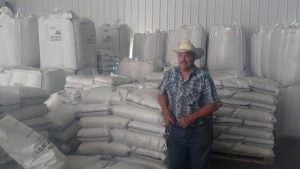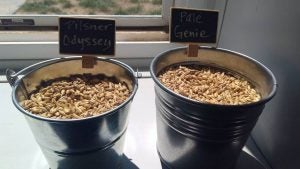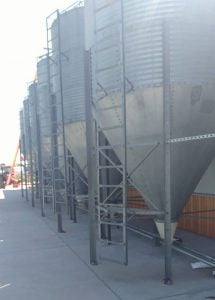Ahh, beer. Spirits. Wine. No matter the circumstance, we as humans will always find a way to enjoy an adult beverage.
Bad mood? DRINK!
In a good mood? DRINK!
Long day? DRINK!
It’s your birthday? Why, let’s DRINK!
It is said that the world consumes over 19 million gallons of pure alcohol every 24 hours, with the Czech Republic leading the way in consumption per capita, followed by Ireland, Germany, and Australia. According to CNBC, America comes in at No. 13, which I found a bit surprising. That’s a lot of drinking, but it all started in a farmer’s field!
I believe a lot of us take this process for granted. We throw ‘em back without stopping to think — what about the hard work that came from the fields to produce it all? As craft breweries continue to grow in popularity, I began to wonder: Where does all this beer come from? Where are the farms that provide this golden goodness?
To explore, I took a trip to Colorado last week and met with a company called Root Shoot Malting run by the Olander family. We were greeted by what I feel was the standard “good ol’ boy” farmer named Steve. He’s been farming all his life, and on their family farm they grow the barley that produces malt for (mostly) beer and a little liquor. They used to grow barley for Coors.

Colorado is known for its local and unique craft brewing, no doubt, and local farmers are always looking for a way to diversify to see if their crops may fetch a higher price point in smaller batch craft beers. So, alas, this system was born:

This state-of-the-art system is the first of its kind in the U.S. The Olander family traveled to Europe to explore different options, but ultimately settled on this Kaspar Schulz system about a year ago, which they say offers good support. While there, the Europeans asked questions on their background in malt production. While new to this type of brew-making system, the family traveled to Canada to take a somewhat short but intensive course to learn the process. Apparently in Europe this is a three-year process, so the Europeans were a little surprised! But anything can be done and done well if you have the right drive and are able to think outside the box.

As the photo above shows, this is the finished product for the malting process, which looks and smells amazing! But before we can get to the final delicious product, let’s take a step back: How does barley go from field through the malting process?
One acre of barley yields around 130 bushels, and a bushel weighs 48 pounds. After grains are harvested, they start in these bins.

A malt batch consists of 20,000 pounds of barley. It’s steeped with water twice and goes through a germination process; it then goes through a kilning process, where it is heated using a very efficient process while recycling as much heat as possible.

After the process is completed, it is unloaded via an auger system and the malt is sold off to brewers! It will be used to make alcoholic beverages by adding water, yeast, hops, etc. It really is such a fascinating process. One thing I found really cool is that malt is in pretty much every kind of beer, but a lot of brewers focus more on the other aspects, like hops.
So, cheers! The next time you celebrate an alcoholic beverage, make sure to remember the farmers who make it all possible.
Michelle Miller, the Farm Babe, is an Iowa-based farmer, public speaker and writer, who lives and works with her boyfriend on their farm which consists of row crops, beef cattle, and sheep. She believes education is key in bridging the gap between farmers and consumers.



